Ever seen your indoor plants start to wilt or turn yellow? It might be because you’re watering them too much. Overwatering is a big problem that can harm your plants, making them sick or even kill them. But don’t worry, you can fix this by knowing the signs of overwatered plants and acting fast.
What tells you that your plants are getting too much water? Look for signs that show they’re drowning. Learn these signs to keep your indoor garden healthy. With the right care, you can have a beautiful, green indoor space.
Identifying the Telltale Signs of Overwatered Plants
Knowing how to spot an overwatered plant is key to giving it the right care. Signs like wilting leaves and fungal growth can warn you of too much water.
Wilting or Yellowing Leaves
Wilting, droopy, and yellow leaves often mean your plant has too much water. Even if the soil feels moist, overwatered plants show these signs.
Leaf Drop (Old and New Leaves)
Too much moisture can make leaves fall off, both old and new ones. If your plant is losing leaves faster than usual, it might be overwatered.
Mushy or Unstable Stems
Soft, mushy stems can’t hold up the plant’s leaves. This makes the plant lean or even fall over.
Brown Spots or Edges on Leaves
Brown spots or edges on leaves can mean your plant is getting too much water. This is often due to root rot or other moisture problems.
Fungus, Mold, or Fungus Gnats
Fungus, mold, or fungus gnats show your plant is getting too much water. These pests love moist soil.
Knowing these signs helps you fix overwatering fast. This keeps your indoor plants healthy and happy.
Causes of Overwatering and Preventing Future Issues
Overwatering your indoor plants is a common mistake. Knowing why it happens can help you avoid it. One big reason is ignoring the care instructions for each plant. Every plant needs different amounts of water, and ignoring this can cause roots to rot.
Ignoring Plant Care Instructions
To stop overwatering, read and follow the care instructions for your plants. These guides tell you the best soil moisture levels and how often to water. Adjusting your watering based on each plant’s needs keeps your garden healthy.
Improper Soil and Pots Without Drainage
Using the wrong soil and pots without drainage also leads to overwatering. Heavy soils hold too much water, and pots without holes let water gather, causing root rot. Choose soil that drains well and pots with drainage holes for healthy plants.
Curating Your Plant Collection
If you often overwater, pick plants that like moist soil. Plants like Calatheas and Anthuriums do well in wetter conditions. Choosing the right plants for your skills and preferences helps you avoid overwatering and keeps your garden thriving.
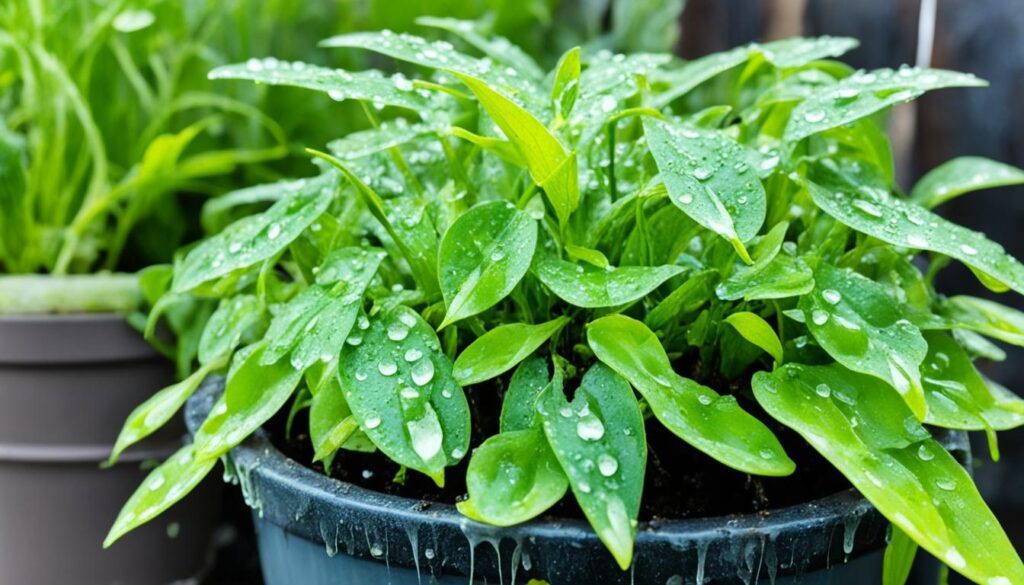
“The key to preventing overwatering is understanding each plant’s unique water needs and adjusting your watering routine accordingly.”
Reviving Overwatered Plants
If your indoor plants are overwatered, don’t worry, you can save them. Act fast and follow a few steps to help them recover.
Stop Watering and Allow Soil to Dry
First, stop watering your plants right away. Let the soil dry out completely to help them heal. Check the soil by sticking your finger in it or looking at the drainage hole. If it’s still wet, wait until it’s dry before watering again.
Repotting and Root Pruning
After the soil dries, check the roots. Remove the plant from its pot and look at the roots. If you see rotted or damaged roots, cut them off with clean scissors. This stops disease and helps new healthy roots grow.
If the roots are badly damaged, think about repotting the plant in fresh soil. This gives it a clean start to recover and grow well.
Cutting and Propagating Severely Damaged Plants
- For plants with extensive damage, you might need to do more. Look for any healthy stems or leaves left.
- Then, use sharp scissors or pruners to cut away the damaged parts, keeping only the healthy parts.
- These healthy pieces can be propagated to grow new plants. This gives your overwatered plant a new chance.
With patience and the right steps, your overwatered plants can recover. By following these tips, you’ll get your indoor garden back to its lush state.
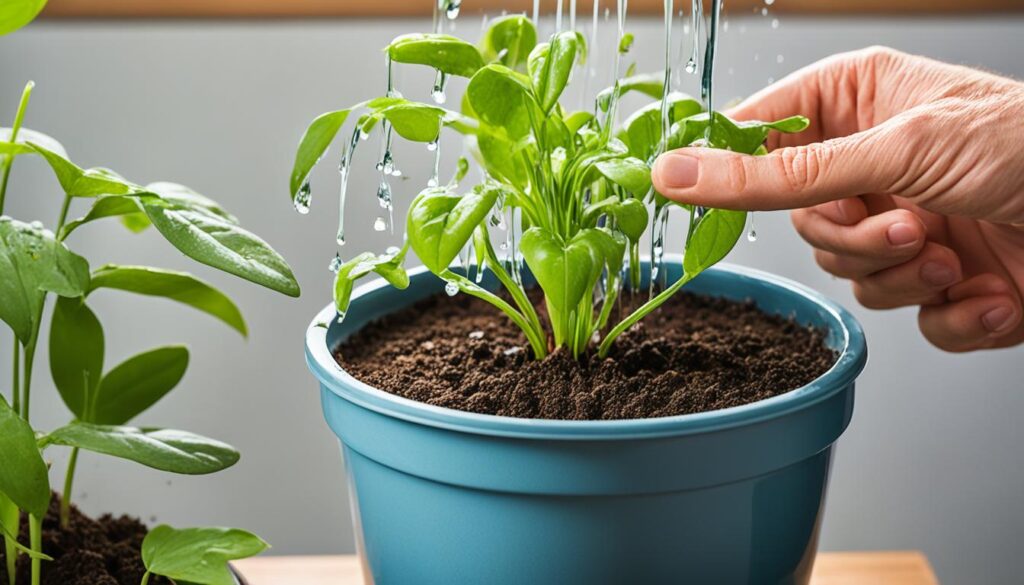
Overwatered Plant Signs: Common Culprits and Solutions
As a devoted plant parent, you might have seen the signs of an overwatered indoor plant. Wilting leaves and fungal growth are just a few signs that show your plant needs help. By knowing what causes these problems and how to fix them, you can save your plants and avoid future issues.
Wilting or yellowing leaves often mean your plant is getting too much water. This happens when the roots can’t breathe because they’re full of water. To fix this, stop watering and let the soil dry out before you start again.
Seeing leaves drop, especially the new ones, can be a bad sign. If stems feel soft and weak, it’s a sign of a bigger problem with the roots. Take your plant out of its pot, cut off any dead roots, and put it in fresh soil that drains well.
| Overwatered Plant Signs | Common Culprits | Solutions |
|---|---|---|
| Wilting or Yellowing Leaves | Waterlogged roots | Stop watering, allow soil to dry |
| Leaf Drop (Old and New) | Damaged root system | Repot, prune damaged roots |
| Mushy or Unstable Stems | Excess moisture | Repot, improve soil drainage |
| Brown Spots or Edges on Leaves | Lack of air circulation | Increase air flow, improve drainage |
| Fungus, Mold, or Fungus Gnats | Consistently wet soil | Allow soil to dry, repot if necessary |
Brown spots or edges on leaves and fungus, mold, or gnats are also signs of overwatering. These problems usually come from poor air flow and wet soil. To fix this, make sure your plant gets enough air and has good drainage.
Knowing what causes overwatering and how to fix it helps you take care of your indoor plants. With the right steps, you can bring your overwatered plants back to life and keep them healthy.
Perfecting Your Watering Technique
To avoid overwatering, it’s key to get your watering technique right. Check the soil moisture often, adjust your watering based on seasonal changes, and make sure there’s good air circulation around your plants.
Checking Soil Moisture
Figuring out when to water can be hard, but it’s easy with a moisture meter or by feeling the soil. Wait until the top inch or two feels dry before watering again. This way, you won’t overwater your plants.
Adjusting for Seasonal Changes
As seasons change, so do your plants’ watering needs. In the growing season, they might need more water. In winter, they might need less. Keep an eye on your plants and adjust your watering technique as needed to avoid overwatering.
Improving Air Circulation
Good air circulation helps the soil dry out faster, reducing overwatering risk. Use a fan or open windows to improve air flow around your plants. This also stops moisture from building up and causing fungal problems.
By using these methods, you can make sure your plants get the right amount of water. This keeps them healthy and happy.
Conclusion
Overwatering is a common issue that can harm your indoor plants. Knowing signs like wilting, leaf drop, and fungal growth helps you fix the problem. It’s important to find out why you’re overwatering, like ignoring care tips or having the wrong soil and pots.
To save your overwatered plants, let the soil dry out, repot, and prune the roots. You can even start new plants from damaged ones. By improving how you water and checking the soil often, your plants will get back to their healthy state.
Learning from overwatering mistakes makes you a better plant caretaker. Always follow the care instructions for each plant. Use soil and pots that drain well and watch your plants closely. With these tips, you’ll have a beautiful, healthy indoor garden that makes your home feel peaceful.
FAQ
What are the signs of an overwatered plant?
Signs of an overwatered plant include wilting or yellowing leaves and leaf drop. You might also see mushy or unstable stems, brown spots or edges on leaves, and fungus, mold, or fungus gnats.
What causes overwatering in indoor plants?
Overwatering happens when you ignore the plant’s care instructions. It also occurs with improper soil mixes that hold too much moisture. And, planting in containers without good drainage doesn’t help.
How can I revive an overwatered plant?
First, stop watering the plant and let the soil dry out completely. You might need to repot the plant. Then, trim away any damaged or rotted roots. Finally, you can propagate the healthiest parts to start fresh.
How can I prevent future overwatering issues?
To avoid overwatering, learn how to water your plants right. Check the soil moisture often. Adjust your watering based on the seasons. And, make sure the plants have good air around them.


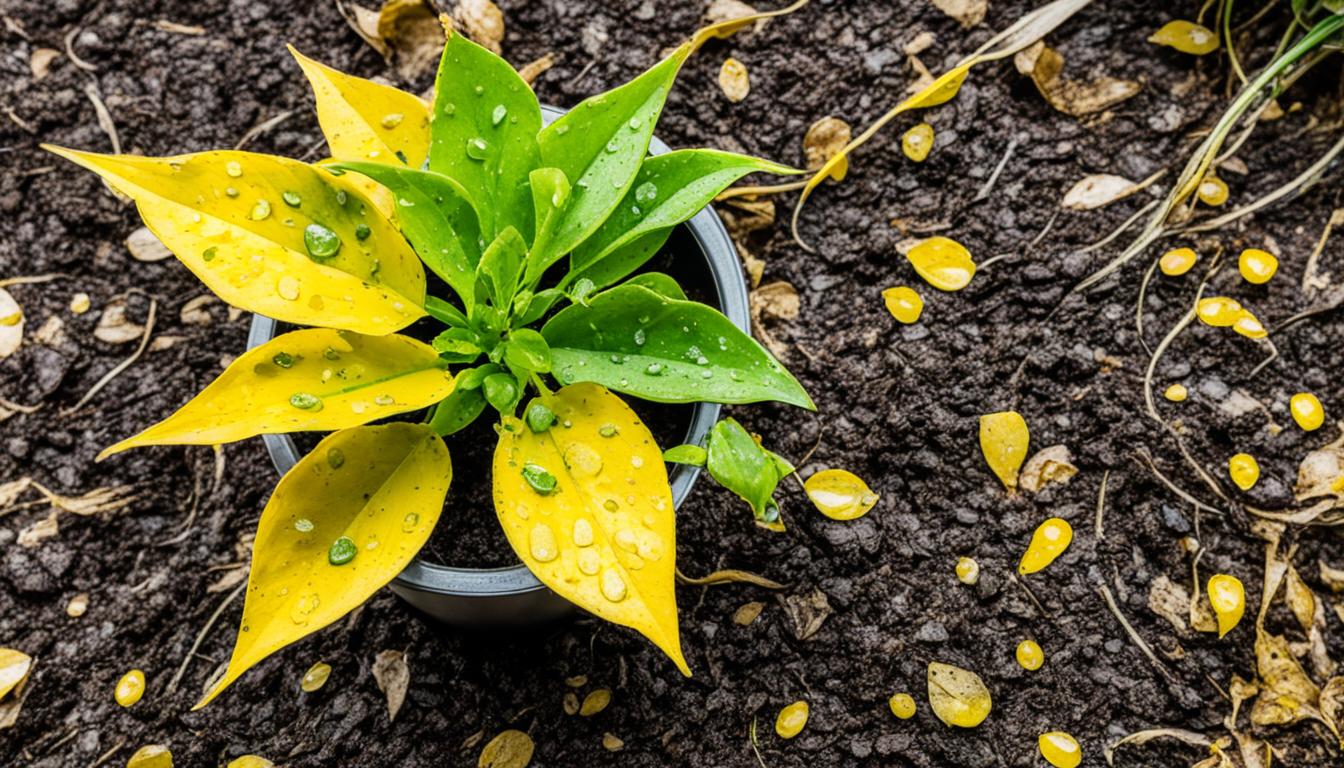
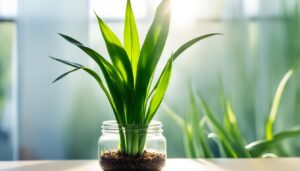
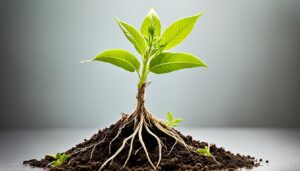

Pingback: Essential Winter Care Tips for Your Houseplants
Pingback: Hoya Plant Care: Why This Cold-Tolerant, Trailing Beauty is a Must-Have
Pingback: Pothos, The Fast-Growing, Trailing Houseplant That’s Perfect for Any Home
Pingback: Peperomia, A Compact, Easy-Care Houseplant That’s Safe for Pets
Pingback: Burro’s Tail, The Unique Draping Succulent That Thrives in Hanging Planters
Pingback: Christmas Cactus, The Festive, Flowering Succulent That Blooms Year After Year
Pingback: Bird of Paradise, The Exotic Indoor Plant That Brings a Tropical Vibe to Your Home
Pingback: Yucca Plant, A Striking, Low-Water Houseplant That Makes a Bold Statement